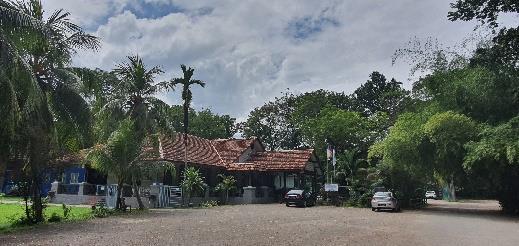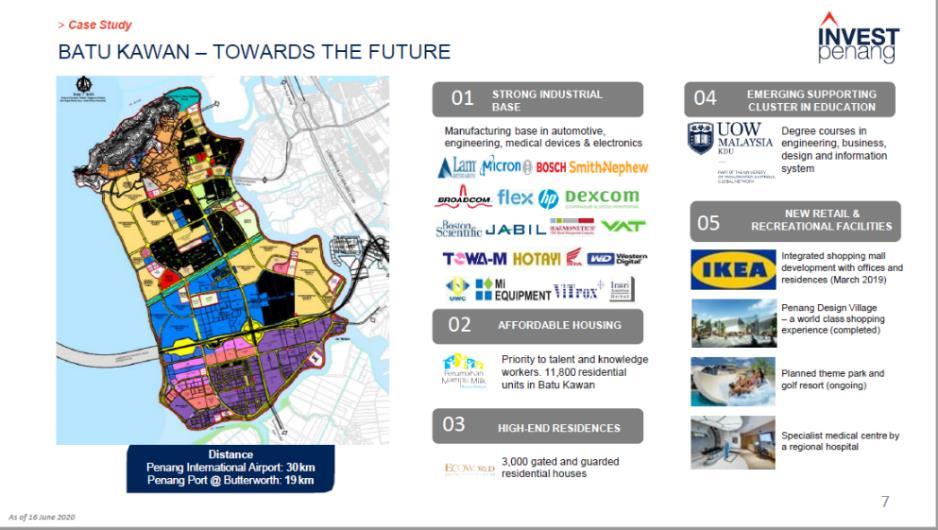26 supply chain and a well-nurtured talent pool. The urban
FORUMS Dato’ Ir. Lim Kok Khong (left) and Ir. Bernard Lim (right) presenting appreciation certificate to Dato’ Seri Lee Kah Choon (centre) after the talk.
planning and infrastructure development of Batu Kawan will be an interesting case study. Speaker shared the plan for Batu Kawan and the way towards the future. Following the proven track record in creating state-of-the-art manufacturing and technologies, Batu Kawan will have 5 objectives in its ecosystem: 1. Strong industrial base 2. Affordable housing 3. High-End Residences
ROUND TABLE DISCUSSION ON IMPLEMENTATION OF RENEWABLE ENERGY (RE) AND ENERGY EFFICIENCY (EE) IN PENANG
I
by Ir. Khaw Yao Shun
nstead of viewing renewable energy (RE) and energy efficiency (EE) as just goals, let us first ask ourselves what is the motive for implementing RE and EE in Penang? Why is there a need for the existence of RE and EE and how do they relate to our everyday life? Coiled in the late 20 th century, these two terms are often associated with efforts of reducing carbon footprints on the earth. Both RE and EE are distinctive yet correlated. RE is on the macro scale. It is about utilising energy that is clean and unlimited where it is easily replenished. The energy should be abundant and leave no carbon trace behind. However, the exploration of the energy itself must also be clean and not at the expense of nature. One of the renewable energies is solar energy which is plentiful in Malaysia. It is a good practice to install solar panels on the rooftop of buildings to harness solar energy. Malaysia is advancing with the introduction of NEM (Net Energy Metering). The concept is to pay users the amount of energy equivalent to how much they have produced using the solar panel. It also further attracts users with the introduction of incentives like Green Investment Tax Allowance (GITA), and other tax waivers. Nevertheless,
4. Emerging supporting cluster in education 5. New retail & recreational facilities Other initiatives by the state of Penang are: i. Batu Kawan as an Eco-City. ii. Penang Smart City The talk was moderated by Dato’ Ir. Lim Kok Khong. There were over 60 participants attended the talk.
it is wise to think of how much roof space has to be sacrificed in order to install a determined number of solar panels as well as how much energy can be produced on the number of solar panels installed. The capital cost must be justified with the operational earnings or else it will not be viable from a business point of view and is not sustainable in a market sense. On the other hand, EE is on a micro-scale. It is more about the habitual and mentality of the user. Essentially, it revolves around how a building utilises less energy to maintain operations at the same level, thereby leaving less carbon footprint from the energy of hydrocarbon. EE can be easily achieved via good engineering design and prudent consumption habits. Note that a high EE building may not necessarily leave lesser carbon footprint as compared to a low EE building that derives its energy from RE. However, it is relatively easier for EE to be implemented by the general public. Therefore, EE contributes the most points to the Green Building Index (GBI). Under the Penang 2030, all new developments with GBI Gold certified from 2020 onwards are listed under the category “Invest in the built environment to improve resilience – Implement climate change adaptation plans”. It is opined that by fulfilling the GBI requirement, RE and EE, which are requirements included in the index, would have already been implemented in Penang indirectly. The article is representing opinion conveyed in “Perbincangan Tenaga Diperbaharui (RE) dan Kecekapan Tenaga (EE) Pulau Pinang” which was held on 25 September 2020 at KOMTAR, chaired by YB Zairil Khir Johari, Exco Kerja Raya, Utility dan Tebatan Banjir.
THE BULLETIN OF THE INSTITUTION OF ENGINEERS, MALAYSIA (PENANG BRANCH)




